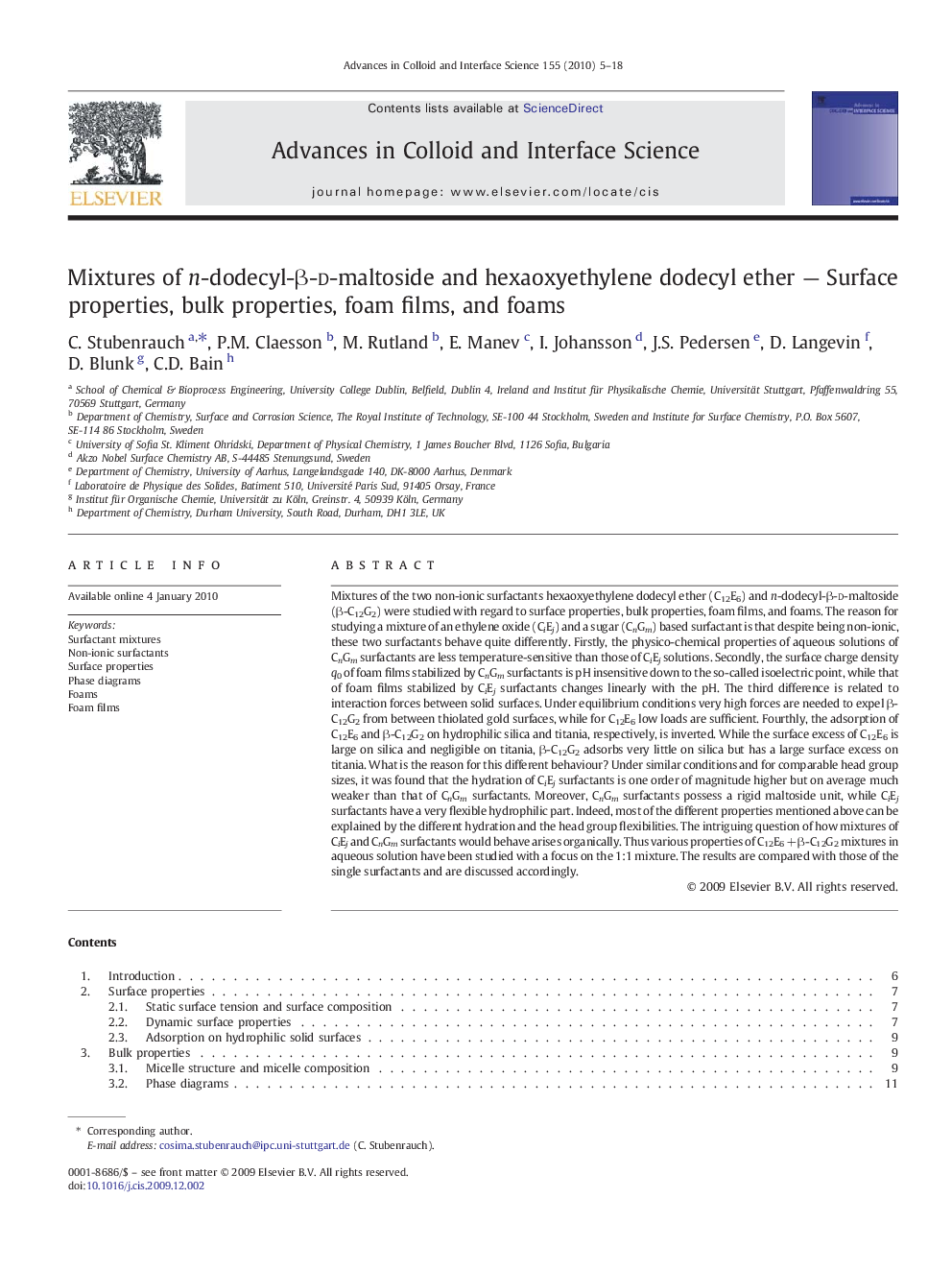| Article ID | Journal | Published Year | Pages | File Type |
|---|---|---|---|---|
| 591044 | Advances in Colloid and Interface Science | 2010 | 14 Pages |
Mixtures of the two non-ionic surfactants hexaoxyethylene dodecyl ether (C12E6) and n-dodecyl-β-d-maltoside (β-C12G2) were studied with regard to surface properties, bulk properties, foam films, and foams. The reason for studying a mixture of an ethylene oxide (CiEj) and a sugar (CnGm) based surfactant is that despite being non-ionic, these two surfactants behave quite differently. Firstly, the physico-chemical properties of aqueous solutions of CnGm surfactants are less temperature-sensitive than those of CiEj solutions. Secondly, the surface charge density q0 of foam films stabilized by CnGm surfactants is pH insensitive down to the so-called isoelectric point, while that of foam films stabilized by CiEj surfactants changes linearly with the pH. The third difference is related to interaction forces between solid surfaces. Under equilibrium conditions very high forces are needed to expel β-C12G2 from between thiolated gold surfaces, while for C12E6 low loads are sufficient. Fourthly, the adsorption of C12E6 and β-C12G2 on hydrophilic silica and titania, respectively, is inverted. While the surface excess of C12E6 is large on silica and negligible on titania, β-C12G2 adsorbs very little on silica but has a large surface excess on titania. What is the reason for this different behaviour? Under similar conditions and for comparable head group sizes, it was found that the hydration of CiEj surfactants is one order of magnitude higher but on average much weaker than that of CnGm surfactants. Moreover, CnGm surfactants possess a rigid maltoside unit, while CiEj surfactants have a very flexible hydrophilic part. Indeed, most of the different properties mentioned above can be explained by the different hydration and the head group flexibilities. The intriguing question of how mixtures of CiEj and CnGm surfactants would behave arises organically. Thus various properties of C12E6 + β-C12G2 mixtures in aqueous solution have been studied with a focus on the 1:1 mixture. The results are compared with those of the single surfactants and are discussed accordingly.
